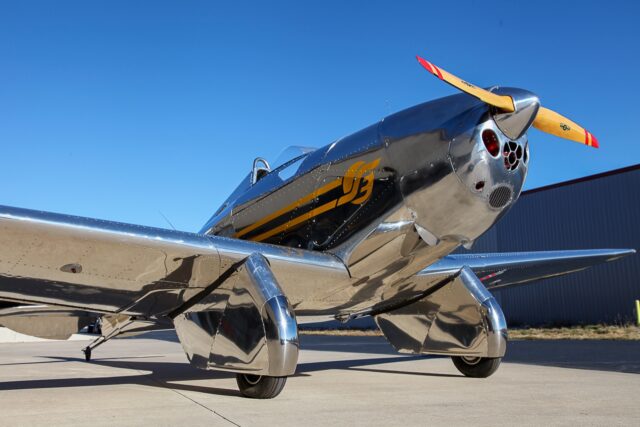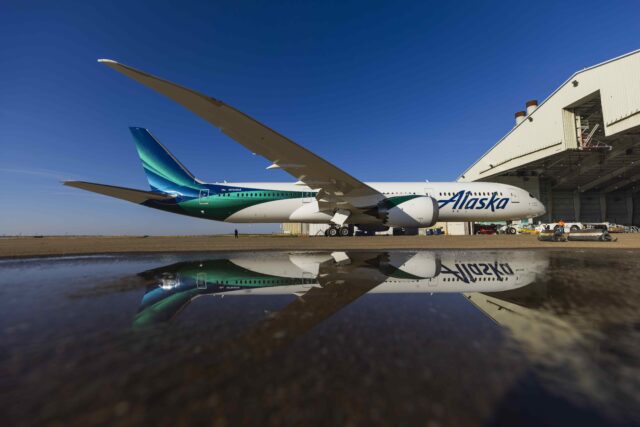Typhoon undertakes live firing test of MBDA’s Spear next generation miniature cruise missile
November 18, 2024

Spear is a turbojet-powered, next generation miniature cruise missile originally developed as part of the UK’s Selective Precision Effects At Range (SPEAR) programme. The SPEAR Capability 1 requirement was fulfilled by the Raytheon Paveway IV precision-guided bomb while Brimstone 2 Block 3, and later Brimstone 3 met SPEAR Capability 2. SPEAR Capability 4 was met by upgrades to Storm Shadow to sustain it to its out-of-service date, and SPEAR Capability 5 is a longer-range replacement for Storm Shadow, the Future Cruise & Anti-Ship Weapon.
SPEAR Capability 3 described a longer-range 100 kg class weapon that was intended to be the primary air to ground armament for the Joint Combat Aircraft (the F-35 Lightning II Joint Strike Fighter) from 2021. It was optimised for internal carriage and could be re-targeted in flight using two-way data links. SPEAR Cap 3 was intended to destroy a wide range of fixed and mobile targets, in all weathers, by day or night, and meeting the strictest rules of engagement. The weapon was to have increased stand-off range, thereby improving the survivability of the launch aircraft.
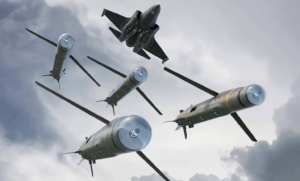
Under the Sensor to Effect Phase 2 (S2E2) technology demonstration programme, a DSTL/QinetiQ/MBDA team produced a networked prototype weapon based on a Brimstone missile and employing a data link, GPS module and data fusion processor to deliver high levels of precision at stand-off distances. The project culminated in test firings from an RAF Tornado GR.Mk 4, and provided a building block for SPEAR Cap 3.
Raytheon offered the GBU-53 Small Diameter Bomb (SDB) Increment II (now known as Stormbreaker) to meet the SPEAR Cap 3 requirement, but as a glide weapon it did not meet a number of Key User Requirements.
SPEAR Capability 3 passed its initial design review in 2011, then began a two-year assessment phase. Although the final design had not been frozen, the basic configuration and characteristics were becoming apparent, including the turbojet powerplant, fold-out wings, multimode seeker and data link.

A prototype weapon was fired from the first Tranche 3 Typhoon ZK355/BS116), flown by BAE Systems chief test pilot Steve Formoso. During the test, conducted at the Aberporth range in the Irish Sea, the missile rolled erect from its inverted carriage position, deployed its wings, started its motor, and flew a series of manoeuvres while flying to a predetermined point of impact. The firing was essentially unguided.
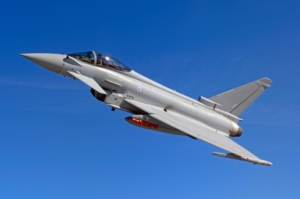
A Main Gate decision on the Demonstration and Manufacture phase was not due until 2018, but a £411 Million contract to develop SPEAR Cap 3 was awarded to MBDA on 18 May 2016.
BAE Systems announced in March 2019 that the company had been awarded a contract by Lockheed Martin to start work on integrating SPEAR 3 and Meteor onto the F-35B, and in early 2021, the UK MoD awarded MBDA a seven-year £550million Demonstration and Manufacture contract for the SPEAR 3 missile system.
Guided firings from a Typhoon were planned to start within 18 months of this latter contract award, production due to start in 2023. Delays to the F-35’s Block 4 programme meant that pressure came off the programme, and the guided firing initially scheduled for 2022 slipped, due to a combination of schedule/programme risk and maturity issues.
In its 2021 Equipment Plan, the MoD said that the In-Service Date of the F-35B would be delayed from 2023 to 2025 and that SPEAR 3 would enter service in 2026, but in November 2021, then-Defence Procurement Minister Jeremy Quin informed the House of Commons Defence Committee that full operating capability for the missile on the F-35B might not be achieved until 2028.
It was widely suspected that the delay was attributable to the ongoing problems with the F-35’s Technology Refresh 3 (TR-3) that is intended to enable the Block 4 upgrade, though there were suggestions that MBDA had not provided a weapon in time for ‘pit drop’ testing. In fact, AGN understands that the issue was with the launcher for Spear, and not the weapon itself, and that integration on the F-35 was ‘complicated’ by Lockheed Martin’s inability to provide adequate data to MBDA, forcing the company to provide a launcher with multiple ‘mode’ options to cover all bases. Because some of these modes were redundant, Lockheed Martin judged the launcher to be outside specifications! These extraneous modes will now be removed from the launcher.
Integration on the F-35 is, however, proceeding more smoothly than SDB II integration.
It is now possible to describe what we should get used to calling the Spear missile in some detail. The SPEAR (Selective Precision Effects At Range) acronym has fallen into disfavour with manufacturer MBDA who now use Spear as a name, without the suffix ‘3’ (though the company’s marketing department may try to retain full capitalisation of the word!).
Spear is designed to be used against a range of targets, including air defences, ships, tanks, defended structures and fast-moving vehicles, in a range of weather and threat conditions, and has a range of “more than 100 km.” In fact range figures from 100 to 140, and even 180 km have been given. This is thanks to the Whitney AeroPower (Hamilton Sundstrand) TJ-150-3 tubojet engine, which is also used on the MALD and MALD-J systems.
The missile has a multi-mode seeker that incorporates two seeker channels (Semi-Active Laser and RF (MMW) but has more than two modes since it can use combined RF/SAL modes (a ‘party trick’ inherited from Brimstone), and, indeed with an expanded array of RF modes – including a ‘full SAR’ mode allowing the kind of scene correlation that underpins the way Storm Shadow operates.
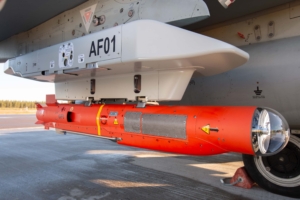
The missile incorporates a two-way data link, together with powerful onboard processing, allowing mid course updates, and even allowing the weapon to be controlled from the ground using a Link 16 terminal.

The sophisticated Insensitive Munitions warhead from TDW Gesellschaft für verteidigungstechnische Wirksysteme mbH is tuneable, and the weapon has a long shelf and carriage life, and provides much-improved maintainability compared to other missiles.
The F-35B will be able to carry up to eight SPEAR missiles (four per bay), providing the next generation of stand-off air-to-surface missiles for Suppression of Enemy Air Defences missions in challenging and complex operating environments, offering the range, flexibility, precision and load-out to defeat modern enemy air defences.

In a written answer to James Cartlidge on 6 September 2024, Defence Minister Maria Eagles said that a “Guided Firing, [was] scheduled to take place later this year.” The first sign that this might be imminent came on 30 September 2024, when a Typhoon test aircraft (ZK356) was photographed at BAE Systems Warton carrying SPEAR 3. This aircraft subsequently deployed to Sweden, for the guided firing that has now been announced.

The firing was made over the Vidsel range on 17 October, against a Russian-built T-72 tank, with a Saab Gripen flying ‘chase’. The pilot was a BAE Systems test pilot, Luke Gili-Ross, and a joint Defence Equipment & Support (DE&S) MBDA and BAE Systems team conducted this first in what will be a series of SPEAR guided flight trials.
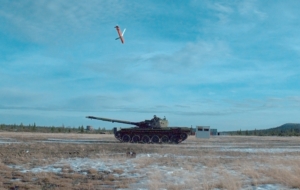
The trial marked the first time the weapons system had been fired against a target. The Spear missile, which used a telemetry unit instead of a live warhead, underwent a high-altitude and high-speed release before it demonstrated the release, ‘gather’ and long-range free-flight control of the missile. The missile then autonomously navigated to the target via customisable routes before using its advanced all-weather radar seeker to map the target area, then using the radio frequency imagery to successfully engage the target. The aircraft returned to Warton on October 21.
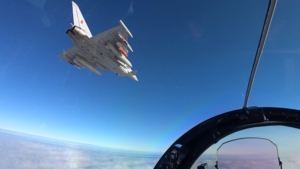
More firings are planned from the Typhoon, probably including firings with a live warhead, and using different seeker modes.
The ‘test integration’ or ‘qualification firings’ of Spear on Typhoon are being made in support of eventual integration on F-35, since Lockheed Martin demand that weapons integrated on the Lightning II are already ‘certified’. There are no plans to integrate Spear onto anything apart from the F-35B at this stage, though clearly the ongoing test campaign could easily form the basis of an operational integration on Typhoon, and a number of Typhoon operators/customers have already expressed an interest in this. But for now the focus needs to be on the F-35, and any distraction is unwelcome.

There are, however, doubts as to when (and even whether) Spear will be integrated on the F-35B at all. Integration of both Spear and Meteor was a key element of the F-35 Block 4 upgrade, but Block 4 has now been ‘reimagined’, and no-one seems willing to confirm what has ‘dropped out’ of the rescoped programme, and what remains in it, beyond mealy-mouthed platitudes about “warfighter priorities”, which almost certainly means US warfighter priorities. As a result, no-one has definitively answered whether Spear is definitely still part of the reimagined F-35 Block 4 upgrade. If it is, the more optimistic predict that ‘integration firings’ of Spear from the F-35 may begin in about two years time.
Costs to date have been £1.47 Bn. The Concept Phase was part of a wider £330m contract that included other systems while Assessment Phase I cost £150m and Phase II £440m. Development and Manufacture has been costed at £550m.

